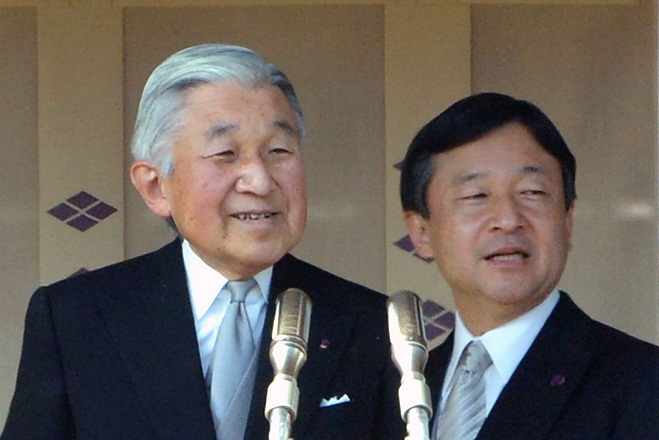TOKYO REPORT: Japan Hoping to Cut Enthronement Ritual Costs
July 3, 2018
Tokyo- Japan's Imperial Household Agency is considering ways by which it can cut expenses related to a series of ceremonies for Crown Prince Naruhito's accession to the Chrysanthemum Throne following Emperor Akihito's abdication on April 30, 2019.
The government intends to have the ceremonies follow the basic concept and content of the enthronement ceremonies for Emperor Akihito, who came to the throne upon the death of his father, Emperor Hirohito, posthumously known as Emperor Showa, in January 1989.
"Daijosai," or prayers for the well-being of the people and a good harvest, is the most important ceremony a new Emperor performs. It requires the construction of some 30 buildings, including a shrine where the ceremony takes place.
In the case of Emperor Akihito's enthronement, the buildings cost about 1.45 billion yen. The government spent over 2 billion yen from state coffers to cover all expenses related to Daijosai.
The upcoming Daijosai is expected to cost more as labor costs have risen roughly 70 pct since 1990, when the ceremony was last held.
The agency is struggling to find ways of reducing costs. As Daijosai requires a lot of space, the buildings cannot be scaled back in size.
The shrine is traditionally built with simple timber, leaving little room for savings from the standpoint of building materials. "We are considering cost-cutting by reusing wooden materials used in the past or selling them (after the ceremonies)," said Yasuhiko Nishimura, vice grand steward of the agency.
As 28 years have passed since the last "Sokui no Rei" accession ceremony, articles used in the ritual require repairs. The agency has set aside 500 million yen to transport the "Takamikura" and "Michodai" canopied thrones for the new Emperor and Empress, built in 1913 and kept in the Kyoto Imperial Palace, and repair or refurbish them.
The "Shukuga Onretsu no Gi" celebration parade will require a new vehicle to carry the new Emperor and Empress as the Rolls-Royce convertible, purchased for 40 million yen for the last parade, cannot be used as the British manufacturer no longer produces parts needed for repairs. The car was also used in the wedding parade for Crown Prince Naruhito and Crown Princess Masako in 1993.
Reducing the cost of banquets is another daunting challenge.
On the previous occasion, a total of seven "Kyoen no Gi" banquets were held over four consecutive days after the "Sokuirei Seiden no Gi," a ceremony to proclaim the enthronement of the new Emperor, and three "Daikyo no Gi" banquets over two days following Daijosai.
The government appropriated 430 million and 350 million yen for the two banquets, respectively, attracting some criticism for wasting taxpayers' money.
The money was mostly spent on ingredients. "The quality of the meals at the banquets should be maintained," a senior agency official said.
Diplomatically, a cut in the number of guests from overseas is also difficult.
In order to save money, the agency plans to hold fewer banquets or be more selective when inviting domestic quests, officials said. Jiji Press
Latest Videos
- THE UNTOLD STORY EXPERT INSIGHTS INTO THE UKRAINE
- NEGOTIATING A NEW ORDER US RUSSIA TALKS ON UKRAIN
- Ukraine: A Pawn in the Geopolitical Game? Will Trump Intervene?
- US VP VANCE CRITICIZES EUROPEAN DEMOCRACIES AT MUNICH SECURITY CONFERENCE
- UNCOVERING THE WEB OF DECEIT: CIA INFILTRATION OF THE MEDIA
- SHIFTING SANDS: TULSI GABBARD’S CONFIRMATION AND THE EVOLVING GLOBAL LANDSCAPE
- FAUCI SCANDAL: A THREAT TO GLOBAL HEALTH AND DEMOCRACY






